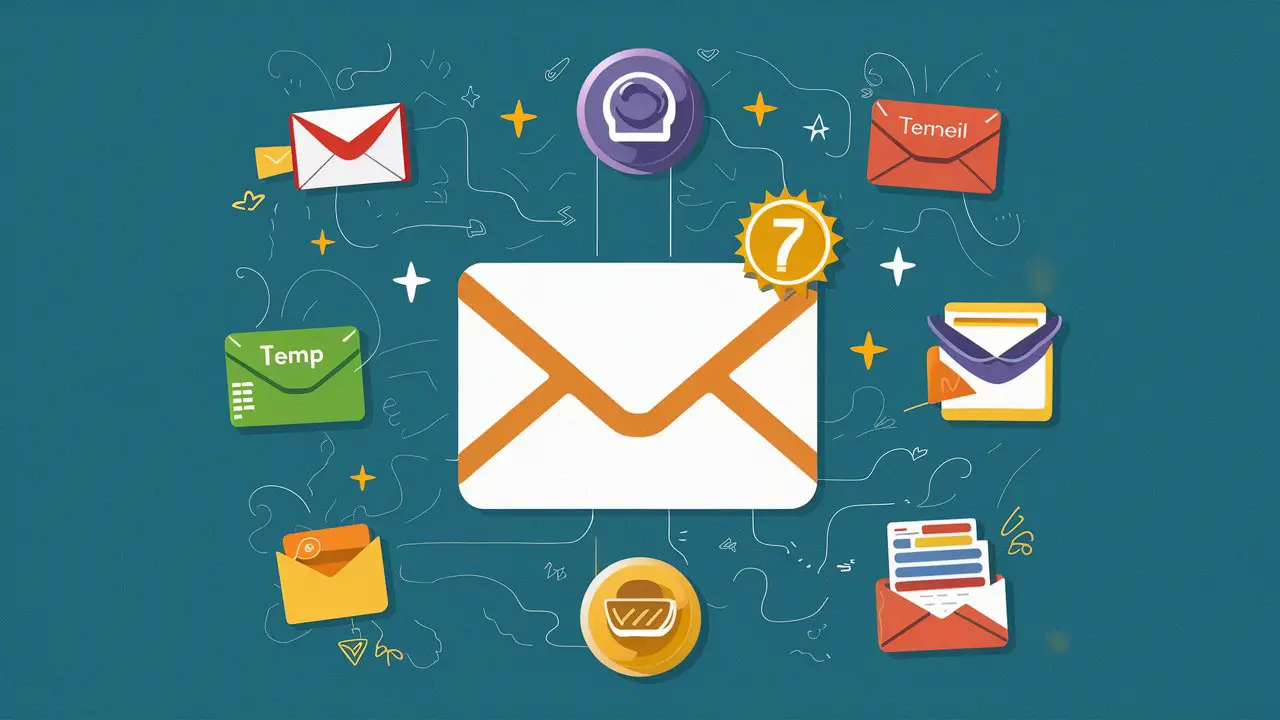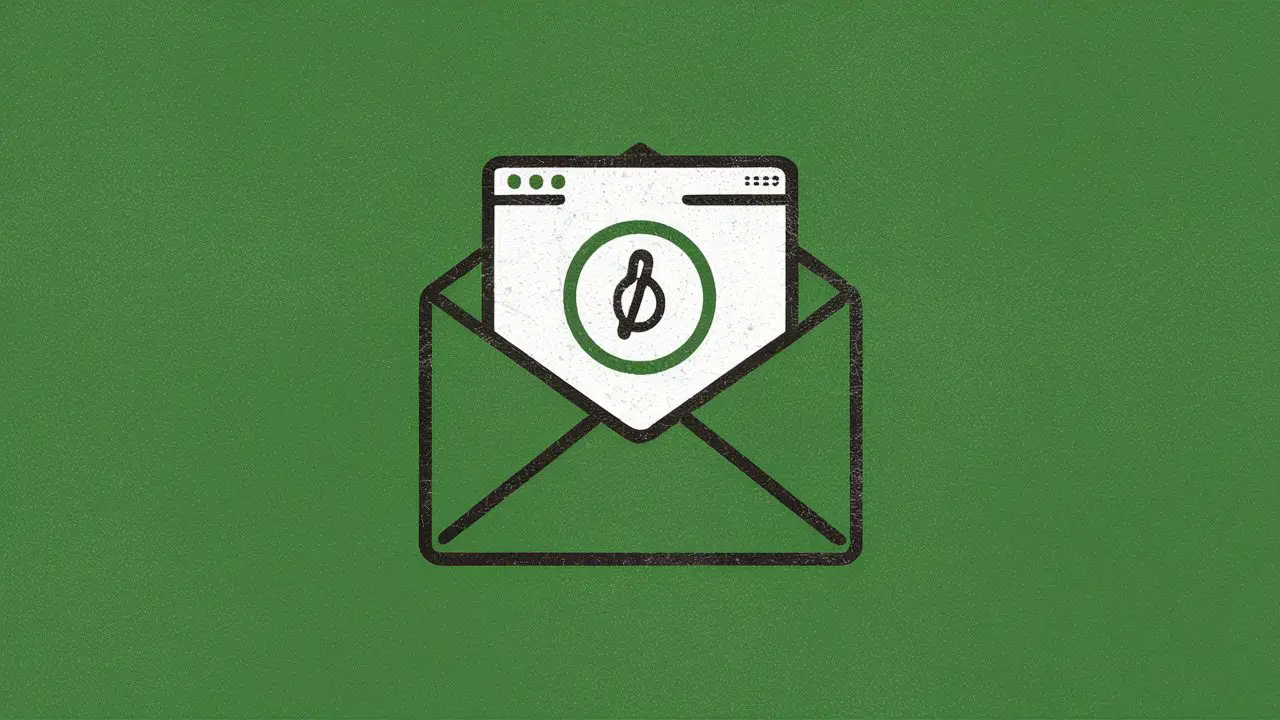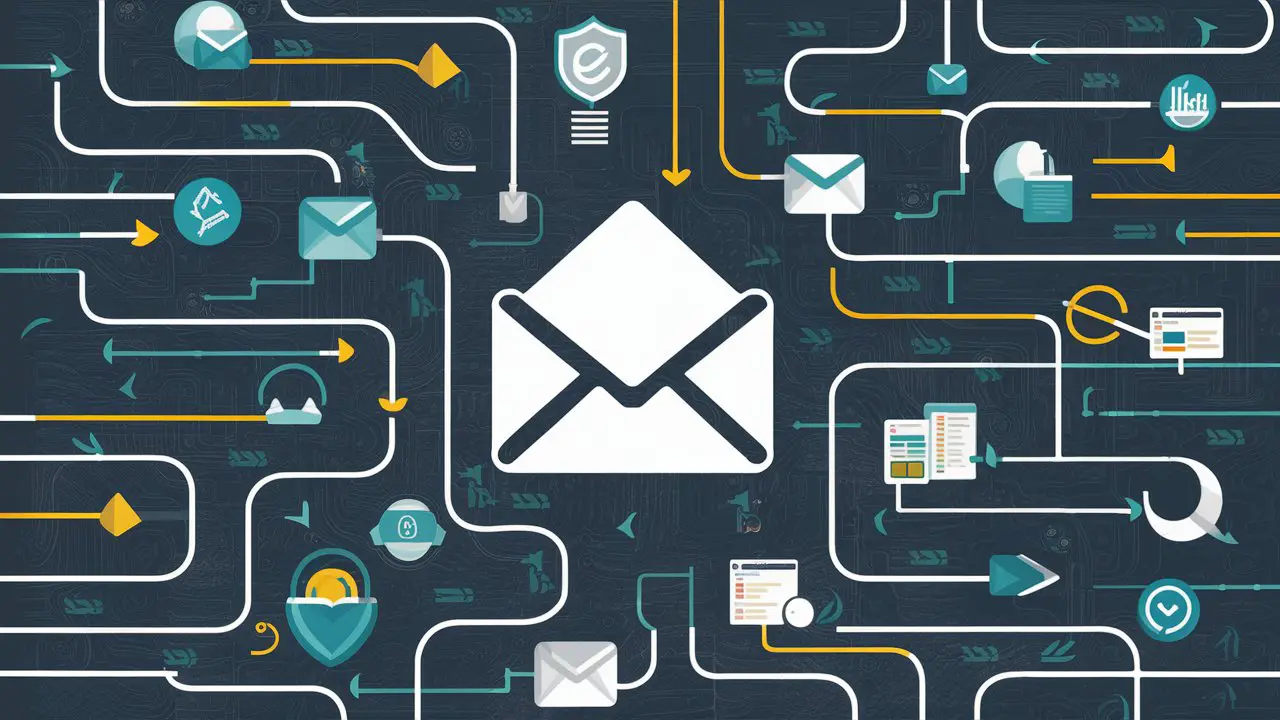In the digital age, managing your online presence and privacy has become increasingly important. Temporary emails offer a unique solution to several internet-related challenges. This article explores the 5 Benefits of Using Temporary Emails, highlighting how they can enhance your digital experience.
Key Takeaways
-
Temporary emails provide enhanced privacy and security by keeping your primary email address private.
-
They help maintain inbox organization by separating personal and professional communication from temporary online sign-ups.
-
Disposable email addresses allow for anonymity, which is beneficial for private web browsing and online activities.
-
Using temporary emails for online sign-ups can significantly reduce spam and unwanted emails in your primary inbox.
-
Marketers and developers can utilize temporary emails for testing and evaluation purposes without risking their main email accounts.
1. Privacy and Security

Using a temporary email address bolsters your privacy and security online. By keeping your primary email address private, you shield it from potential data breaches, spam, and phishing attempts. Temporary emails act as a buffer, absorbing the risk that comes with online sign-ups and interactions.
Temporary emails provide a secure alternative for online activities, ensuring that your main email account remains protected from various cyber threats.
Here are some key reasons to use a temporary email for privacy and security:
-
Protects your main email from being exposed in data leaks.
-
Prevents spam from cluttering your primary inbox.
-
Shields you from targeted phishing attacks.
Many online platforms recognize the importance of user privacy and support the use of temporary emails as a legitimate contact method. This acceptance underscores the value of temporary emails in maintaining online security.
2. Inbox Organization

Maintaining a clean and organized primary inbox can be a challenge, especially when it's bombarded with promotional emails and sign-up confirmations. Temporary emails offer a strategic solution to this clutter. By using them for one-time registrations or subscriptions, you can keep your main inbox reserved for important communications.
Temporary emails act as a buffer, catching the bulk of non-essential emails and leaving your main inbox with only the emails that matter.
Additionally, temporary emails can help categorize and prioritize your digital communications. For example, you might use different disposable addresses for online shopping, forum sign-ups, and newsletter subscriptions. This way, you can easily track and manage the types of emails you receive.
-
Online Shopping
-
Forum Sign-Ups
-
Newsletter Subscriptions
3. Anonymity

The use of temporary emails is a powerful tool for maintaining anonymity online. They enable users to engage in various online activities without revealing their true identity. This is particularly useful for forums, commenting on blogs, or signing up for services where personal information is not essential.
-
Maintain anonymity in online interactions
-
Sign up for services without personal data exposure
-
Participate in discussions or forums without a traceable identity
Temporary emails serve as a shield, protecting your identity in the digital realm and offering a safe way to explore the internet without leaving a personal footprint.
Many misconceptions surround temporary emails, such as their association with illicit activities. In reality, they are a legitimate tool for safeguarding privacy. Users can easily navigate online services, keeping their personal details secure and their primary email accounts free from clutter and potential security risks.
4. Spam Reduction

The convenience of temporary emails extends beyond just privacy; it plays a significant role in spam reduction. By opting for a temporary email when signing up for online services, newsletters, or promotions, you effectively shield your main inbox from a deluge of unwanted messages.
-
Temporary emails act as a buffer, intercepting spam before it reaches your personal account.
-
They serve as a one-time use tool, perfect for sign-ups that are likely to generate spam.
-
Utilizing disposable emails can significantly declutter your digital life, making it easier to focus on important communications.
Temporary email addresses are not just about avoiding spam; they're about taking control of your digital communication and ensuring that what matters gets your attention.
5. Testing and Evaluation

Temporary emails are a boon for testing and evaluation purposes. Marketers and developers often require a sandbox environment to test email campaigns, sign up for services, or evaluate products. Using temporary emails, they can conduct these activities without the risk of spamming their primary inbox or exposing it to potential security threats.
Testing involves several steps, including previewing, validating, and sending emails. For instance, when dealing with AMP emails, it's crucial to ensure that they adhere to user experience standards and are safe. This process includes:
-
Previewing the email's appearance in recipients' inboxes.
-
Validating AMP emails to guarantee safety and quality.
-
Sending the emails after thorough testing.
Temporary emails streamline the process by providing a clean slate for each test, ensuring that results are not skewed by previous interactions or data.
Moreover, temporary emails facilitate the use of interactive features like quizzes or rewards systems without affecting the main email account. This allows for a more dynamic testing environment where engagement and functionality can be assessed in real-time.
Conclusion
In summary, temporary emails are a practical solution for maintaining privacy, security, and inbox organization. They debunk common myths by offering a reliable, user-friendly, and secure way to engage with online services without compromising personal details. Whether for testing purposes, reducing spam, or simply keeping your main email clutter-free, temporary emails provide a layer of anonymity and flexibility that is hard to match with traditional email accounts. As we navigate an increasingly digital world, the use of temporary emails can be a smart strategy for managing our online interactions more effectively.
Frequently Asked Questions
What are the main advantages of using a temporary email address?
The main advantages include enhanced privacy and security, a clutter-free primary inbox, anonymity, reduction in spam, and a safe way to test and evaluate services without exposing your main email address.
Are temporary emails only used for questionable activities?
No, temporary emails are not just for shady activities. They serve various legitimate purposes such as protecting your primary email from spam and signing up for online services without revealing personal information.
How long do temporary emails last?
Temporary emails are designed for short-term use, but many providers offer extended retention periods, allowing access for days or weeks. Users can often renew or extend the lifespan of their temporary email.
Is it complicated to create a temporary email address?
No, creating a temporary email address is usually very simple. Most services offer a user-friendly platform where you can generate a disposable email quickly without complex setups.
Can I use a temporary email for important services like banking?
Temporary emails are widely accepted for account registrations and verifications, but it's not recommended to use them for services that require ongoing access or personal identification, like banking.
Do temporary emails provide the same level of security as traditional emails?
While temporary emails may not have all the features of traditional emails, they are designed to offer a layer of privacy and protect against spam and unsolicited messages.




